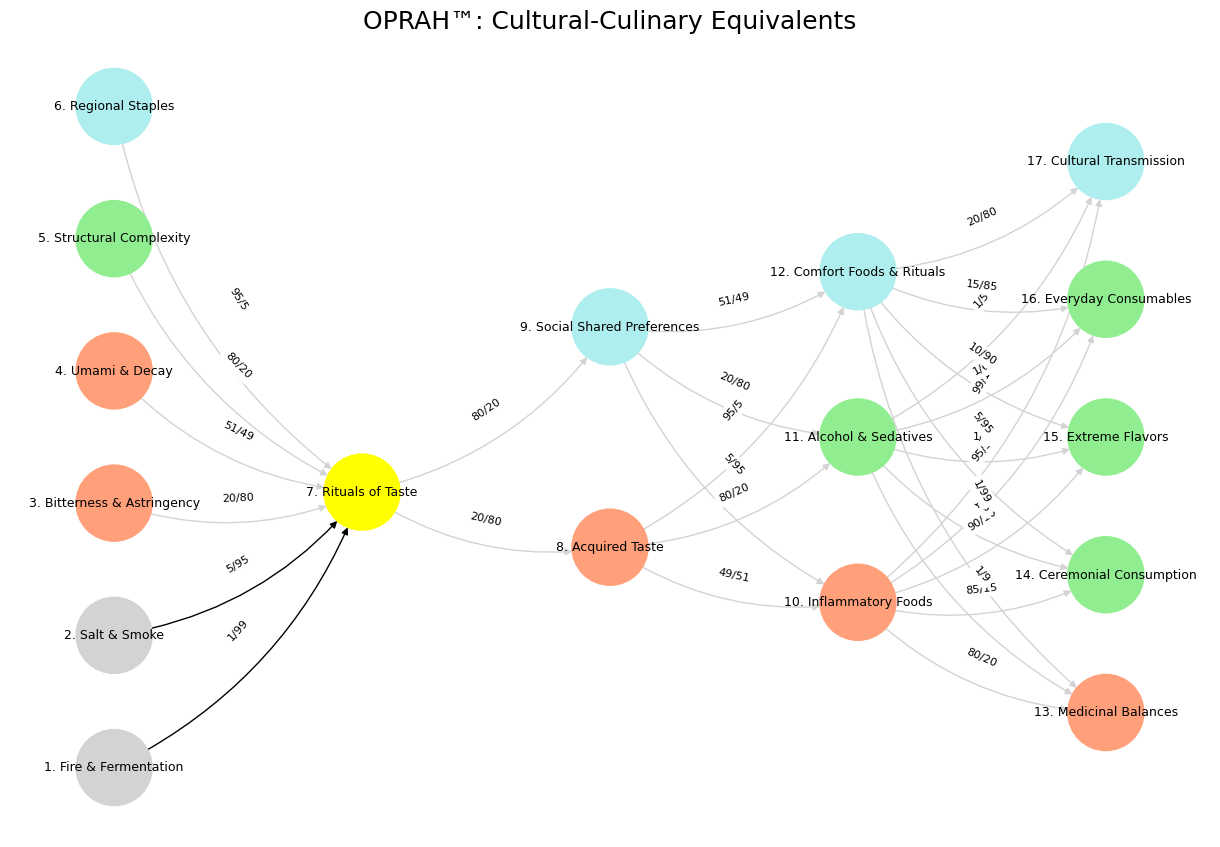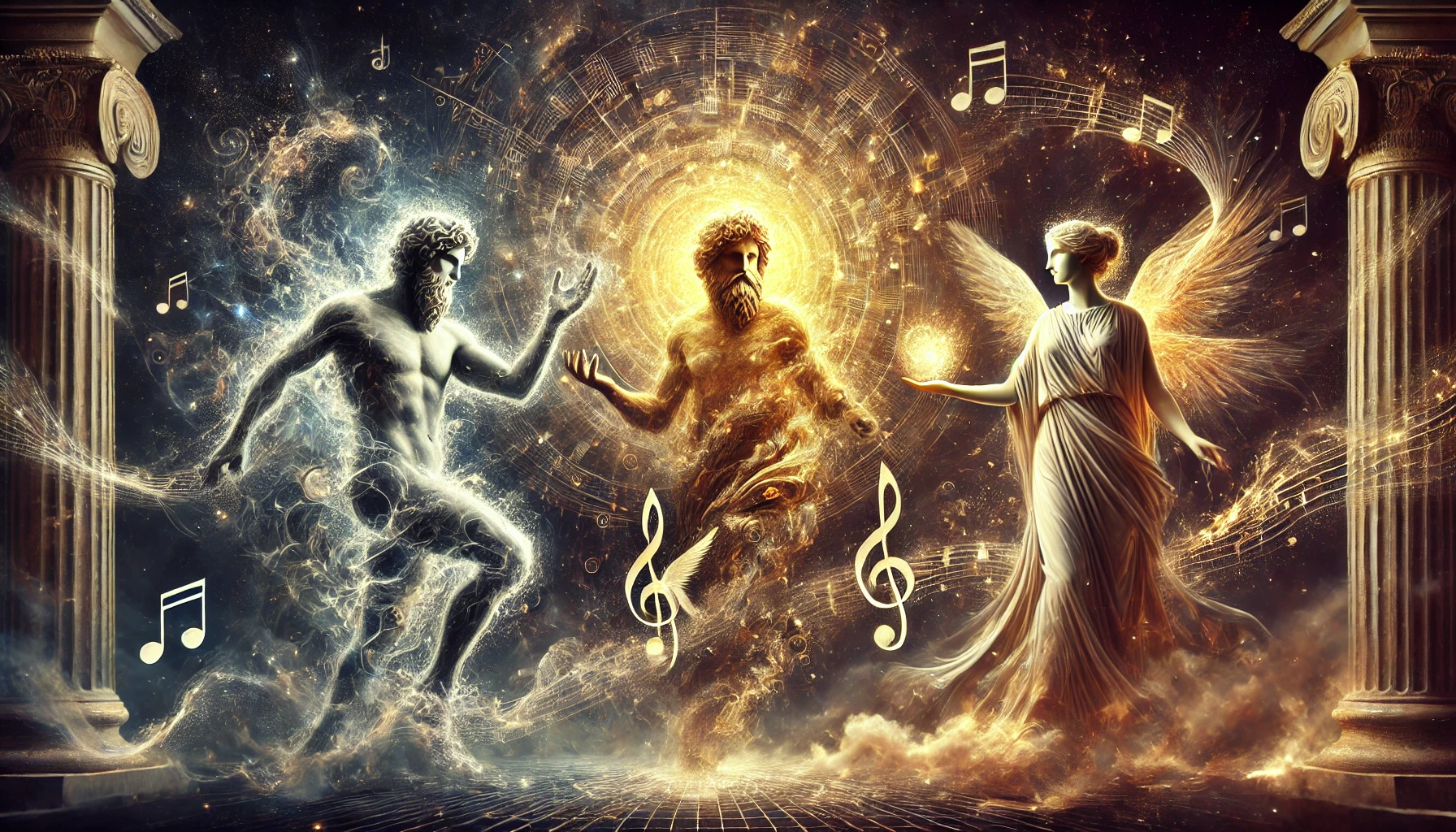Normative#
The metaphor offered in White Lotus—that at birth we are like a drop of water separated from the sea (individuality), and at death we return to it (communal consciousness)—is not unique to the show, nor invented by its writers. It is a poetic expression that resonates deeply with Eastern philosophical and religious traditions, particularly Buddhism and certain strands of Hinduism and Taoism. In Buddhist thought, the concept of anatta or non-self challenges the notion of a permanent, individual identity. Life is seen as a temporary aggregation of elements—form, sensation, perception, mental formations, and consciousness—that arise and dissipate like waves or drops in the ocean. Similarly, the idea of returning to the sea upon death evokes the dissolution of ego and reunification with a vast, impersonal totality. It’s also echoed in Hindu notions of Atman merging back with Brahman, the ultimate reality, and in the Taoist reverence for the Tao as the primordial source into which all things ultimately flow.
The metaphor is evocative not because it is precise, but because it bypasses the rational mind and touches the poetic, the mythic, the aesthetic. There is no empirical evidence, of course, for the return of the soul or self into some cosmic ocean—science does not deal in such metaphors. From a neuroscientific perspective, the brain ceases activity, consciousness collapses, and the body decomposes. But science is ill-equipped to speak to the emotional, symbolic, or mythic weight of death. This is why metaphors like the sea endure. They do not answer death; they frame it in ways the human psyche can metabolize.
In terms of your framework—the sea, the ship, the island—this metaphor sits right at the heart of it. The sea, in your philosophy, is the realm of raw truth, mystery, entropy, and boundlessness. The drop returning to the sea is, in your terms, the dissolving of the illusion of individuality (the ship) and the structures of meaning (the island) into the unfiltered, original source. But your framework also emphasizes the value of the island—that meaning is not just illusion to be escaped, but a necessity to survive and flourish in life. Therefore, where the monk’s vision tends toward a kind of sublime nihilism, your vision seems to insist on the dignity of the journey—the performance of selfhood, the crafting of belief systems, the curating of truth into beauty. The monk’s sea is impersonal; your sea is dangerous, even seductive, and not necessarily redemptive.
So while the metaphor in White Lotus harmonizes with your cosmology at the level of symbols, your framework is more dynamic. It doesn’t simply long for return, but asks: how did the drop dance while apart from the sea? What did it sing, how did it love, what illusions did it craft to keep afloat? The monk sees death as the end of story; you, I think, are more interested in how the story performs itself across sea, ship, and shore.

I'd advise you to consider your position carefully (layer 3 fork in the road), perhaps adopting a more flexible posture (layer 4 dynamic capabilities realized), while keeping your ear to the ground (layer 2 yellow node), covering your retreat (layer 5 Athena's shield, helmet, and horse), and watching your rear (layer 1 ecosystem and perspective).
The White Lotus is captivating in a way that sneaks up on even the most seasoned viewers, and I think it’s because it doesn’t try to dazzle you in the usual ways—no bombastic plot twists, no heavy reliance on genre tropes—but instead seduces you slowly through tone, character tension, and atmosphere. It’s like watching a luxury vacation unravel in slow motion, where the real action is psychological, social, and deeply ironic.
One key reason it’s so engaging is Mike White’s precise balance of satire and sincerity. He’s not mocking his characters in a hollow way—he understands them. The guests at the resort are grotesque, hilarious, pathetic, and painfully real, often all at once. The show doesn’t reduce them to villains or heroes; it lets them squirm under the weight of their own contradictions, which mirrors real life more than most shows dare. As a viewer, you’re constantly oscillating between amusement, disgust, and recognition—and that ambivalence keeps you hooked.
The structure is also genius: each season is a closed, self-contained mystery, but the murder (which we know about from the beginning) is really just a frame. The true thrill is watching how desire, resentment, money, sex, and power slowly corrode the surface. It’s social suspense, not action suspense. That tension—between what’s visible and what’s bubbling under—never lets up. You’re watching masks slip, one passive-aggressive brunch at a time.
And then there’s the aesthetic. The show is drenched in beauty: turquoise seas, resort architecture, mythic symbolism, and a score that somehow feels both tribal and operatic. That hypnotic soundtrack is doing a lot of emotional work—it signals that beneath this luxury, something ancient and primal is thrashing about.
As you from crimes,
Would pardon'd be
So too shall I, from shadows plea,
Let your indulgences,
Set me free
— Prospero, Yours Truly, Grok-3
Given your framework—myth, illusion, fractals, curated truth—The White Lotus works because it treats the resort like an island of performance. Everyone’s ship has docked there, each character is staging their identity, and the sea (of truth, of entropy) is never far away. By the end, someone always drowns, metaphorically or literally. It’s not just good TV—it’s a parable in silk sheets.
Who is the author of The White Lotus? It’s tempting to say “Mike White,” of course—and factually, you’d be correct. But The White Lotus is not just the product of a man named Mike White. It is, as Wilde would put it, a confession in aesthetic form: a slanted, stylized autobiography masquerading as satire. And if we read the show the way we should read all great fiction—not as social commentary alone, but as psychic exorcism—then Mike White reveals himself not just as the writer, but as the haunted, self-divided, morally ambivalent soul that the series itself performs.
To speculate on the author, then, is to speculate on the consciousness that must exist in order for a show like this to emerge. Mike White is, quite plainly, not a moralist. He doesn’t punish his characters for their sins—he lets them sweat in them. He doesn’t resolve ambiguity; he marinates in it. That suggests an author with no appetite for tidy narratives or didactic endings. He is not the stern schoolmaster of HBO dramas, nor the hopeful optimist. He’s a disillusioned insider with just enough distance to laugh. That makes him dangerous. And funny.
Show code cell source
import numpy as np
import matplotlib.pyplot as plt
import networkx as nx
# Define the neural network layers with new culinary-cultural labels
def define_layers():
return {
'Suis': ['Fire & Fermentation', 'Salt & Smoke', 'Bitterness & Astringency', 'Umami & Decay', "Structural Complexity", 'Regional Staples'],
'Voir': ['Rituals of Taste'],
'Choisis': ['Acquired Taste', 'Social Shared Preferences'],
'Deviens': ['Inflammatory Foods', 'Alcohol & Sedatives', 'Comfort Foods & Rituals'],
"M'élève": ['Medicinal Balances', 'Ceremonial Consumption', 'Extreme Flavors', 'Everyday Consumables', 'Cultural Transmission']
}
# Assign colors to nodes
def assign_colors():
color_map = {
'yellow': ['Rituals of Taste'],
'paleturquoise': ['Regional Staples', 'Social Shared Preferences', 'Comfort Foods & Rituals', 'Cultural Transmission'],
'lightgreen': ["Structural Complexity", 'Alcohol & Sedatives', 'Ceremonial Consumption', 'Everyday Consumables', 'Extreme Flavors'],
'lightsalmon': ['Bitterness & Astringency', 'Umami & Decay', 'Acquired Taste', 'Inflammatory Foods', 'Medicinal Balances'],
}
return {node: color for color, nodes in color_map.items() for node in nodes}
# Define edge weights
def define_edges():
return {
('Fire & Fermentation', 'Rituals of Taste'): '1/99',
('Salt & Smoke', 'Rituals of Taste'): '5/95',
('Bitterness & Astringency', 'Rituals of Taste'): '20/80',
('Umami & Decay', 'Rituals of Taste'): '51/49',
("Structural Complexity", 'Rituals of Taste'): '80/20',
('Regional Staples', 'Rituals of Taste'): '95/5',
('Rituals of Taste', 'Acquired Taste'): '20/80',
('Rituals of Taste', 'Social Shared Preferences'): '80/20',
('Acquired Taste', 'Inflammatory Foods'): '49/51',
('Acquired Taste', 'Alcohol & Sedatives'): '80/20',
('Acquired Taste', 'Comfort Foods & Rituals'): '95/5',
('Social Shared Preferences', 'Inflammatory Foods'): '5/95',
('Social Shared Preferences', 'Alcohol & Sedatives'): '20/80',
('Social Shared Preferences', 'Comfort Foods & Rituals'): '51/49',
('Inflammatory Foods', 'Medicinal Balances'): '80/20',
('Inflammatory Foods', 'Ceremonial Consumption'): '85/15',
('Inflammatory Foods', 'Extreme Flavors'): '90/10',
('Inflammatory Foods', 'Everyday Consumables'): '95/5',
('Inflammatory Foods', 'Cultural Transmission'): '99/1',
('Alcohol & Sedatives', 'Medicinal Balances'): '1/9',
('Alcohol & Sedatives', 'Ceremonial Consumption'): '1/8',
('Alcohol & Sedatives', 'Extreme Flavors'): '1/7',
('Alcohol & Sedatives', 'Everyday Consumables'): '1/6',
('Alcohol & Sedatives', 'Cultural Transmission'): '1/5',
('Comfort Foods & Rituals', 'Medicinal Balances'): '1/99',
('Comfort Foods & Rituals', 'Ceremonial Consumption'): '5/95',
('Comfort Foods & Rituals', 'Extreme Flavors'): '10/90',
('Comfort Foods & Rituals', 'Everyday Consumables'): '15/85',
('Comfort Foods & Rituals', 'Cultural Transmission'): '20/80'
}
# Define edges to be highlighted in black
def define_black_edges():
return {
('Fire & Fermentation', 'Rituals of Taste'): '1/99',
('Salt & Smoke', 'Rituals of Taste'): '5/95',
}
# Calculate node positions
def calculate_positions(layer, x_offset):
y_positions = np.linspace(-len(layer) / 2, len(layer) / 2, len(layer))
return [(x_offset, y) for y in y_positions]
# Create and visualize the neural network graph
def visualize_nn():
layers = define_layers()
colors = assign_colors()
edges = define_edges()
black_edges = define_black_edges()
G = nx.DiGraph()
pos = {}
node_colors = []
# Create mapping from original node names to numbered labels
mapping = {}
counter = 1
for layer in layers.values():
for node in layer:
mapping[node] = f"{counter}. {node}"
counter += 1
# Add nodes with new numbered labels and assign positions
for i, (layer_name, nodes) in enumerate(layers.items()):
positions = calculate_positions(nodes, x_offset=i * 2)
for node, position in zip(nodes, positions):
new_node = mapping[node]
G.add_node(new_node, layer=layer_name)
pos[new_node] = position
node_colors.append(colors.get(node, 'lightgray'))
# Add edges with updated node labels
edge_colors = []
for (source, target), weight in edges.items():
if source in mapping and target in mapping:
new_source = mapping[source]
new_target = mapping[target]
G.add_edge(new_source, new_target, weight=weight)
edge_colors.append('black' if (source, target) in black_edges else 'lightgrey')
# Draw the graph
plt.figure(figsize=(12, 8))
edges_labels = {(u, v): d["weight"] for u, v, d in G.edges(data=True)}
nx.draw(
G, pos, with_labels=True, node_color=node_colors, edge_color=edge_colors,
node_size=3000, font_size=9, connectionstyle="arc3,rad=0.2"
)
nx.draw_networkx_edge_labels(G, pos, edge_labels=edges_labels, font_size=8)
plt.title("OPRAH™: Cultural-Culinary Equivalents", fontsize=18)
plt.show()
# Run the visualization
visualize_nn()

Fig. 24 Oscar Wilde is Apollonian & Nietzsche is Dionysian.#
But more interestingly, Mike White writes like someone who has lived the paradox: the guilty liberal with money; the queer artist in a world of hollow inclusion; the dropout who stayed close enough to power to study its smell. The White Lotus is not a rejection of privilege—it’s a witness statement. It’s the confession of someone who knows how spiritual decay can bloom in beautiful places, who has swum in turquoise waters and still felt hollow. The drop, in his metaphor, has tasted the sea and the spa, and found both equally absurd. This is a show born not from theory but from complicity—and that’s why it works.
More poetically, White writes like a man torn between the monk and the mask. On one hand, he senses the futility of ego, the drop’s return to the sea. On the other, he delights in the performances people stage to avoid that realization. That’s why The White Lotus is not nihilistic—it’s theatrical. Every character is a tragicomic actor in their own morality play. The show doesn’t point to truth directly; it shows how people dress it up, whisper around it, choreograph away from it. It is, as your framework would say, a series of ships attempting not to capsize, marooned on an island made of meaning, while the sea—truth, entropy, death—looms just off-camera.
So, the author? A fabulist with a scalpel. A satirist with a soul. A modern-day Prospero, conjuring illusions not to deceive, but to survive. Mike White isn’t merely the writer—he’s the drop that left the sea, played tourist on a doomed island, and brought back a story soaked in salt. The island is the resort. The ship is capitalism. The sea is always calling.

